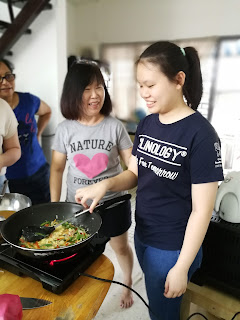Chapter 4: Food additives
Food ingredient vs Food additives
Food ingredient - large amount in food
Food additive - small amount in food
Food additives are ingredient that have purpose to the food
source - can be Artificial or Natural
🍉 Natural food additives [Disadvantages] 🍉
- High cost
- Low density or impact
- Often undesirable flavor profile
- Flavor variation depends on the processing or condition of fruit
- Less stability
- High microbial contamination
🍟 Preservatives & antioxidant 🍟
↦ Prevent autoxidation with its formation of fatty acid free radicals
↦ Prevent hydrolytic rancidity by donating a hydrogen atom to the double bond in fatty acid and preventing the oxidation of any unsaturated bond
⚡ Hydrolytic rancidity ⚡
↦ caused by breaking down of a lipid into its component fatty acids and glycerol [Hydrolysis]
↦ during frying frozen food products
⚡ Oxidative rancidity ⚡
↦ Oxidation of fatty acid
↦ When oil exposed to air (oxygen) and light
↦ often in highly unsaturated lipids
🍭 Coloring agent 🍭
1.Replace natural color during processing, air, light, moisture and storage
2.Correct natural variations in color/ enhance color
3.Provide visual appeal to wholesome and nutritious food
🍬 Flavoring agent 🍬
• Impart the characteristic flavor of the flavorings
Eg: vanillin give vanilla flavor to ice cream
• Augment, complement or modify a flavor
Eg: vanillin modify the flavor of chocolate or cocoa
• Mask the original flavor
Eg: anise cover bitter medicinal
🍰 Emulsifying, Thickening & Stabilizing Agents 🍰
Emulsifying agent - to form homogeneous mixture
Thickening agent - to increase viscosity; provide consistency & texture to product
Stabilizing agent - to jellify liquid into different hardness level


Comments
Post a Comment